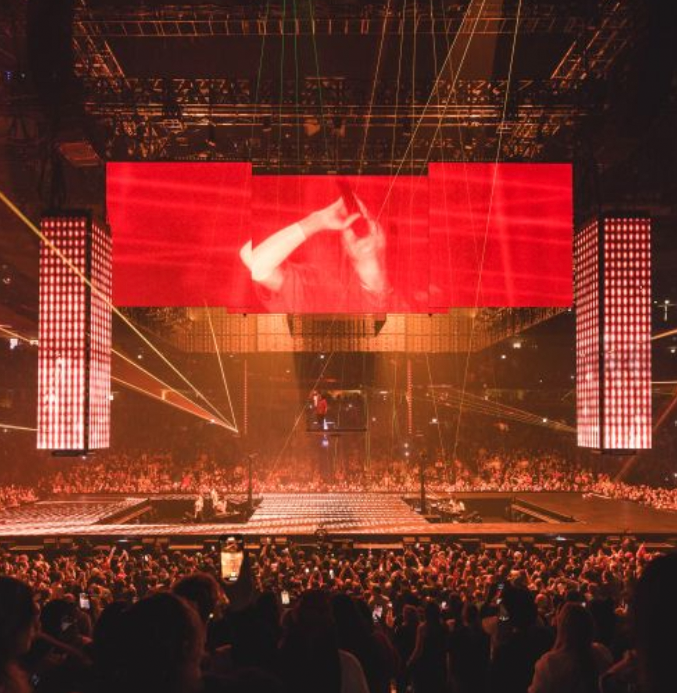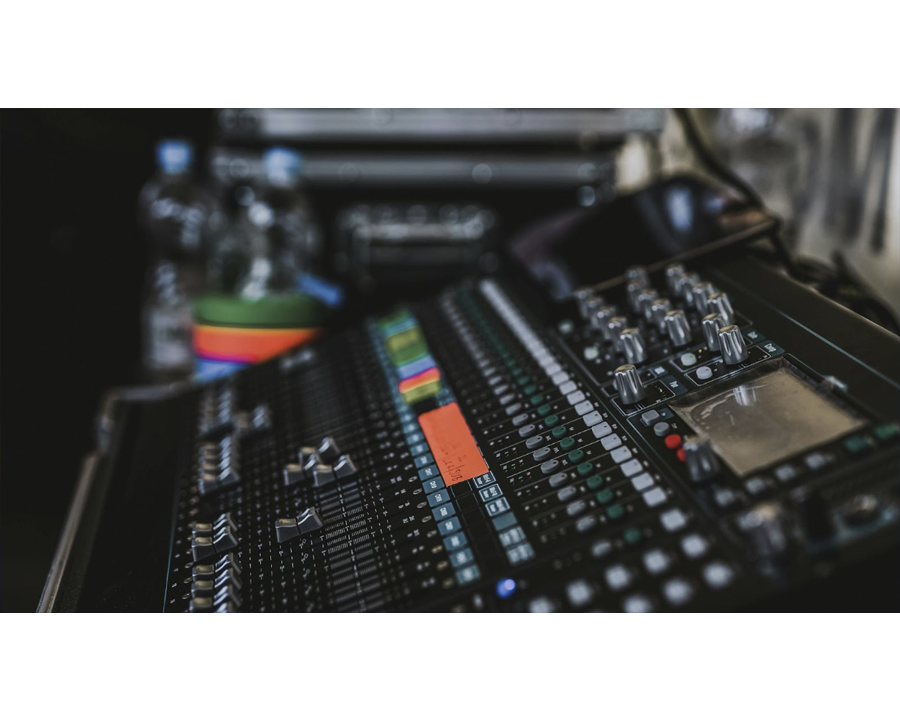
Audiovisual equipment is a combination of audio and visual technologies that help in communication and engaging activities within different environments. It is essential for presentations, events, and collaboration. In this article, you will learn what audio-visual equipment is, its applications, types, selection process, trends in 2025, and maintenance tips.
What is Audio Visual Equipment?
Audio-visual equipment, in general, is based on the usage of special devices and tools to provide impressive presentations or communications, using sound and visual features. These systems combine the audio features that include sound effects, music, or words with visual parts such as images, slides, or videos. These work together to ensure interaction and completeness.
This equipment helps in improving communication. Whether it is in a corporate boardroom, teaching in a classroom, or entertaining big audiences. The audio-visual equipment makes sure that your message comes across to every person in the audience.
Types Of Audio Visual Equipment
Audiovisual equipment is varied and for specific needs; below are some of the key types you are likely to encounter.
Projectors
Projectors are machines that project images on the screen or flat surface. They are a major part of presentations, movie showings, and training sessions. Modern projectors boast HD or even 4K capabilities. Therefore provide clear images. Some include wireless connectivity, whereby it would be very easy to connect to other devices.
Speakers
Speakers make sound louder to ensure that any person in a room can hear the audio clearly. They come in different forms, portable, wall-mounted units, and ceiling-installed systems. In large venues, special types of speaker setups exist, such as surround sound. For creating a truly immersive audio experience.
Microphones
Microphones capture sound and transmit it to an audience or recording device. Common types include handheld microphones for speeches. Lapel microphones for hands-free. Wireless microphones for flexibility. Each type of microphone fits different scenarios, interviews, presentations, or stage performances.
Video Walls
Video walls are multiple displays arranged together to create one big screen. The application of such systems can be found in control rooms, shopping malls, and other entertainment places. They come with high-resolution display options and are ideal for the display of advertisements, live feeds, or other graphical details.
Interactive Displays
Interactive displays are touch screens that allow users to interact with content directly. They are being increasingly integrated into classrooms and corporate training sessions to foster collaboration and interaction. Features such as multi-touch support and real-time annotation further increase their utility.
Cameras
Cameras utilized in audio-visual settings take images or video for live streaming, recording, or broadcasting. They find applications in events, studios, and even video conferencing settings. Advanced cameras come with AI-powered focus and lighting adjustments.
Lighting Systems
Lighting systems enhance visual effect for an event or presentation. They range from spotlights, LED panels to stage lighting. Proper lighting ensures the audience sees the visuals clearly and adds to the overall ambiance of the setting.
Audio Mixers
Audio mixers give you control and ability to balance sound coming from a couple of sources. They find essential applications in concerts, theatres, and live shows when numerous microphones and instruments have been used.
Control Systems
The control systems are designed to operate audio-visual equipment on a centralized basis. This can also be controlled from one place, adjusting the volume or brightness accordingly.
Applications Of Audio Visual Equipment
Audiovisual equipment has a wide array of applications across various sectors. Below are some of the key areas where this equipment finds its application.
Business And Corporate Events
The corporate world relies on audiovisual equipment in effective communication. Businesses employ these technologies in conferences, seminars, launching of products, and in board meetings. Video conferencing systems enable teams to work together when away from each other. While projectors and speakers enhance in-person presentations.
Education
Educational institutions depend on audio-visual facilities to enhance teaching and learning. Interactive displays, along with projectors, allow for interactive lessons. The microphones ensure the voice of the instructor is easily and clearly heard in large classrooms and halls.
Entertainment
For music concerts, theaters to sporting events, it forms memorable experiences. The contribution by top-notch speakers, video walls, and advanced lighting systems enhances all performance immersions.
Healthcare
The purpose that audio-visual equipment plays in healthcare is to assist telemedicine, medical training, and patient education. Such systems allow for video conferencing so as to consult patients from distant locations. Displays and projectors also make the explanation of complex conditions simple.
Retail And Advertising
Retailers use video walls, interactive displays, and digital signage to attract customers and show off products. Such dynamic tools create striking advertising campaigns.
Hospitality And Events
Audio visual systems are used by hotels, event planners, and conference centers for staging successful events. Events ranging from weddings to corporate functions are smoothly and professionally presented using these systems.
Government And Public Services
Audio visual equipment is used for public addresses, training, and surveillance by government departments. It is also used in courtrooms for presenting evidence, and in control rooms where activities are monitored.
Steps in Choosing the Best Audio Visual Equipment
Choosing the right audio-visual equipment will depend on your very specific needs. Here’s a detailed guide to help you make an informed decision.
Define Your Objectives
The first thing that you should do is determine the purpose of the equipment. Do you need a new classroom, a conference or a home cinema? Having this in mind, one is able to direct attention to the most appropriate choices.
Assess The Venue
The size and layout of the venue are critical factors. For example, a small meeting room may be served with a simple projector and speakers. While a large auditorium will require a more complex setup with advanced sound and display systems.
Determine Your Budget
Set a clear budget before you begin to explore options. While the temptation may be big with the latest and most advanced equipment. Make sure the features align with your actual needs. Remember, often quality comes at a price.
Compatibility
Ensure the equipment is compatible with your existing devices. For example, if you’re using laptops or tablets. Verify that the projector or interactive display supports the necessary input formats.
Assess Ease of Use
Choose equipment that is easy to set up and operate. Look for features like wireless connectivity and intuitive controls. User-friendly systems save time and reduce the likelihood of errors during use.
Test Before Buying
Whenever possible, test the equipment in real-world scenarios. This will give you a clear idea of its performance and help you identify any limitations.
Consider After-Sales Support
It should have reliable customer support and warranty coverage. To contact someone for help, always fix your eyes on companies who offer after-sale service.
Latest Trends In Audio Visual Equipment 2025
Some very exciting trends are shaping its future in 2025 and beyond. There are below;
Wireless Connectivity
Wireless audiovisual systems are gradually finding their way into use due to factors of convenience. It will rid a person of cumbersome cabling. Hence making the setup not only faster but also tidy. Standard equipment now being used in modern sets-up includes wireless projectors, microphones, and speakers.
Immersive Experience
Technologies such as virtual and augmented reality are being integrated into audio-visual set-ups. This creates immersive environments in gameplay, training, and events.
AI Integration
Artificial intelligence is transforming audio visual equipment. AI-powered cameras can adjust focus and lighting automatically. While AI speakers optimize sound output based on room acoustics. These features enhance usability and performance.
Energy Efficiency
Due to growing environmental awareness. The trend is shifting toward energy-efficient audio-visual equipment. There is a greater emphasis by manufacturers on greener designs with lower power consumption without sacrificing performance.
Cloud-Based Solutions
Cloud technology enables access to audio visual systems remotely. This is particularly useful for companies with several branches. Since it allows for content to be managed and stored centrally.
High Resolution
The demand for high resolution keeps increasing. Ultra HD and 8K displays are getting more accessible and offer striking visuals for presentation and entertainment purposes.
Voice-Controlled Systems
Voice control is also becoming a norm in audio-visual systems. One can easily command devices to perform operations with ease. This is pretty helpful in smart homes and modern offices.
Setup and Maintenance of Audio Visual Equipment
Proper installation and maintenance will ensure that your audio-visual equipment works at its best. Here’s how you can ensure your systems work effectively.
Installation
Install according to the manufacturer’s instructions. For complicated setups, you may want to hire professional installers. They will ensure that the equipment is configured correctly and positioned for maximum efficiency.
Positioning
Place the equipment in strategic positions to ensure effectiveness. For instance, align projectors to the screen and position speakers directly towards the audience. Place no device near heating or direct sunlight.
Cable Management
Cables should be managed well to avoid accidents from tripping and to ensure the area looks neat. Cables should be tied using cable ties or conduits. Wireless alternatives further simplify cable management.
Regular Cleaning
This is affected by dust and debris that might hamper the performance of your equipment. Keep screens, lenses, and microphones clean using appropriate materials to maintain clarity and functionality.
Software Updates
For equipment with software components, ensure you install updates as they become available. These updates often include performance improvements and bug fixes.
Routine Inspections
Schedule regular check-ups to find problems as early as possible. Check cables, connectors, and hardware for wear or damaged conditions. Replace faulty items with new ones without delay in case of any fault.
Basic Troubleshooting
Master general troubleshooting techniques for day-to-day issues such as low quality audio or connectivity failures. Keep user manuals on-site for easy access.
Professional Servicing
For high-end models of equipment, professional periodic servicing is recommended. These would run deeper diagnostics, extensive repairs, and keep the systems at peak performance.
Conclusion
Audiovisual equipment is an indispensable tool in modern communication. Making every experience in all industries more enjoyable. Knowing its types, applications, and maintenance helps you make informed decisions and stay ahead of technological advancements. Following the outlined trends will help you unlock the potential of your audio-visual systems in 2025.

Enter the digital world with our advanced display technologies.



